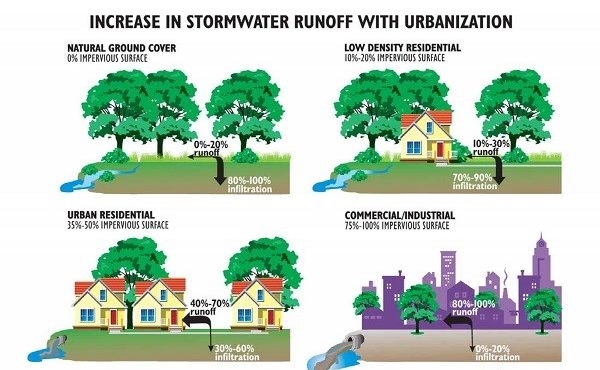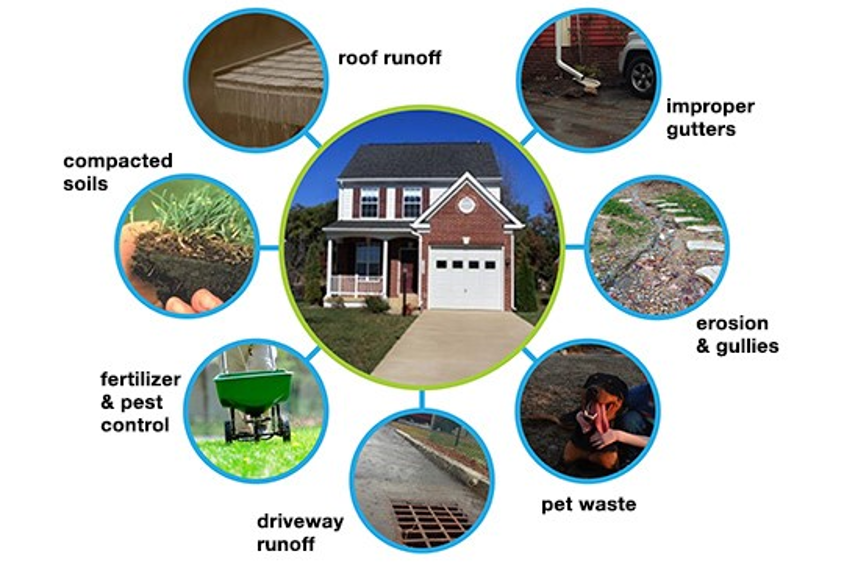What is Stormwater?
The management of stormwater runoff is at once a simple concept and a complex problem. Precipitation runs off impervious surfaces rather than infiltrating into the soil. The cumulative impact resulting from the increased frequency, volume, and flow rate of stormwater runoff can lead to destabilization of downstream channels and can also result in increased pollutant loading to waterways.


Where does it come from?
Stormwater is the water that runs over land and impervious surfaces such as streets, parking lots and driveways after a rain or snowmelt event. Stormwater runoff occurs when the the ground is not able to absorb this water.
Where does it go?
Stormwater can pick up debris, chemicals and other pollutants and flow over land and end up directly in our waters or it enters a stormwater management system.
Why should I care?
We are all part of a watershed. Anything that enters a storm sewer system is discharged untreated into the waterbodies we use for swimming, fishing, and providing drinking water. Some potential concerns are:
- Flooding: When stormwater has nowhere to go, flooding happens. Flooding impacts public safety, property, and lives.
- Pollution: Stormwater picks up everything that is on the ground and carries it to our waterways
- Erosion and Sedimentation: Erosion and runoff can cause many issues, including streambank erosion and sedimentation. Sedimentation of waterways from runoff causes changes to aquatic habitats and can lead to undesirable plant growth and disruption of aquatic ecosystems. Sedimentation also fills in waterways, which can increase the flooding potential.
- Outdoor Recreation Impacts: Stormwater runoff can cause polluted waterways that can lead to restrictions or bans on boating, swimming, fishing and other recreational activities.
What can I do?
Even small changes can make a big difference in how we manage stormwater. Things like picking up pet waste, properly disposing of household hazardous waste, installing rain barrels and sweeping up litter and debris from sidewalks is all it takes to make a difference, and every bit helps. Refer to outreach & education for additional information.

